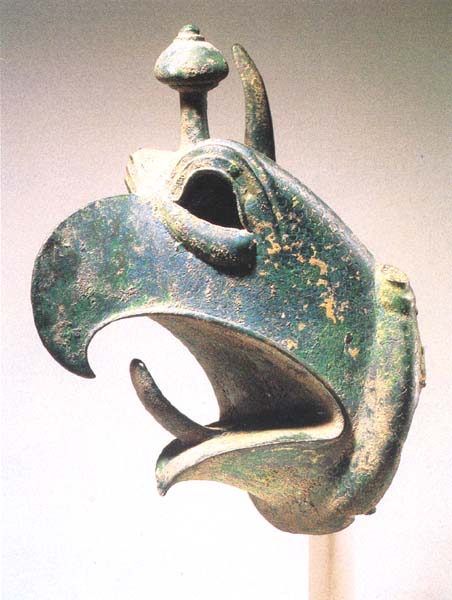
This fearsome bronze hybrid, a mythical beast called a griffin, originally had a gaping bird’s beak, the ears of a donkey and the body—now missing—of a large cauldron. While a bird’s head and ass’s ears are common attributes of griffins, popular in Near Eastern art throughout the second and first millennia B.C., they were generally depicted with a lion’s body.
As the Greeks established trade contacts in the Levant and the Nile Delta during the early first millennium B.C., their sculptors began to create a new style of art by reworking standard eastern Mediterranean motifs, such as lotus blossoms, palmettes and composite creatures like sphinxes and griffins. Although these Greek artists invented neither griffin nor cauldron, they appear to have been the first to combine them. With ears erect, eyes wide and beak open, the Greek griffins often appear ready to attack, suggesting they served a protective function, recalling their role in Greek myth as the guardians of Apollo’s gold. (The knob on this griffin’s head is somewhat of a puzzle. It may represent a bird’s crest, as on a peacock.)
Already a library member? Log in here.
Institution user? Log in with your IP address.

